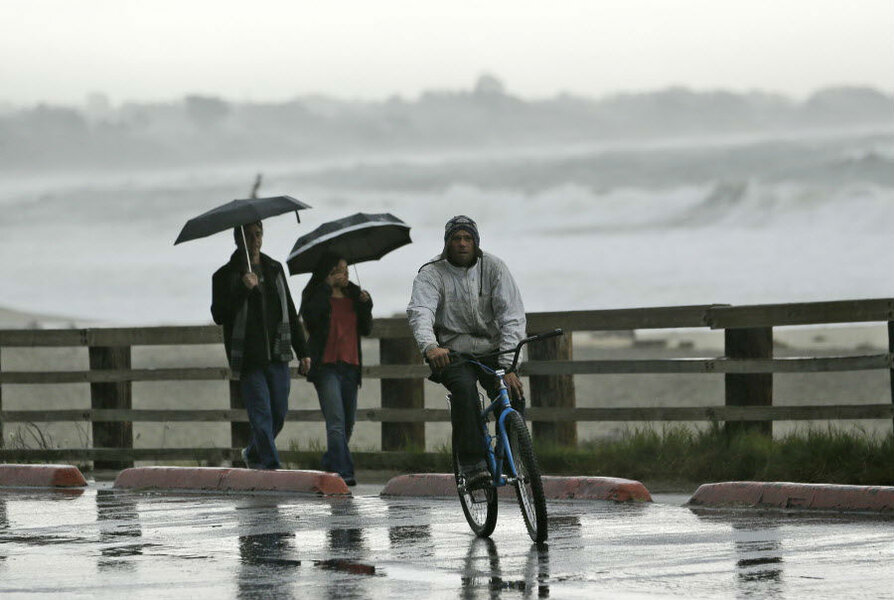Why lots of rain offers little relief to drought-stricken California
Loading...
| Los Angeles
Two hefty storms socked the West Coast over the weekend, delivering up to a foot of rain in some spots. But hopes that the so-called Pineapple Express would water down the historic drought gripping the region have been quashed by the fact that this precipitation river is too warm to make a difference.
“It hasn’t helped as much as you would think,” says AccuWeather meteorologist Ken Clark, based in southern California. “What you look for is for these storms to deliver a lot of snow to the Sierra snowpack because that snow gradually melts into summer and feeds the reservoirs.”
But the moisture in these storms came from tropical and sub-tropical areas such as Hawaii and is just plain too warm to deliver the necessary snowfall. Going forward, he points out that only 27 percent of the state’s water is in snow-covered areas, “and that’s very low.”
It does not help that the region experienced its driest January on record.
Nevertheless, water is water and anything can make some difference, notes Mr. Clark.
“Short term it has helped a little bit,” he says pointing to some key statewide statistics. The figure for water retained in snow for a year ago was only 26 percent, for instance.
“It’s only a percent, but it’s something,” he says.
While the state’s two major reservoirs at Lake Oroville and Lake Shasta are low – 64 percent and 71 percent, respectively – Clark notes that the figure was even lower, down in the 30 percent range, back in December before major storms that hit around the holidays.
The weekend's northern storms bypassed southern California. But while the Southland could certainly use the water, the state water experts are most concerned with what happens up north.
“The northern part of the state is exceptionally important,” says Doug Carlson, spokesman for the Department of Water Resources (DWR).
“It’s where most of the water falls and turns into rain or snow,” he says, funneling into the San Joaquin and Sacramento delta and the major water projects that move water south.
Mr. Carlson says that the storms did move the meter at Lake Oroville a tad: The level was 60 percent of normal on Thursday. As of Sunday, that figure had moved up to 64 percent.
“That shows you just how far down the water levels are,” says Carlson, noting that three years of drought have taken a serious toll on the state's reserves.
Precipitation in the all important northern Sierra region's precipitation, as measured by an eight-station weather index, is at 102 percent of average as of Monday, says Carlson. Nonetheless, given the extent of the drought, the DWR is still only able to fulfill some 15 percent of the amount requested by the 24 water contractors the department serves.
“The best thing all around would be to get to 150 percent of average by the end of the water year in September,” he says, adding that if that happens, “that just might give California the possibility of ending this drought.”







